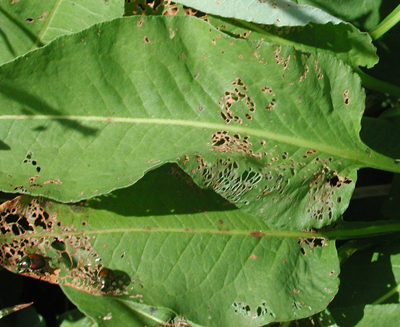Japanese beetle
July 1, 2015
Chewing pests
Look for adults in late June through September. Timing may vary, depending on geographic location. Adults tend to congregate on plants, feeding between the leaf veins and causing leaves to appear lace-like or skeletonized. Japanese beetle adults feed on a wide variety of herbaceous perennials.

Japanese beetle adults are 9 to 12 mm long, metallic green with coppery wing covers. White tufts of hair at the rear end of the abdomen are a distinguishing characteristic for identification.
Management
Japanese beetles are attracted to plants that have been previously damaged, so it is important to control beetles early. The use of pheromone and bait traps is not recommended because this will attract more beetles from surrounding areas and result in greater damage to plants. Small numbers of Japanese beetle adults can be hand picked. Contact insecticides may be applied as soon as adults are apparent. Note that many contact insecticides are harmful to bees, beneficial insects and mites.

Damage from beetle feeding.
Print a PDF of this page: Japanese beetle



 Print
Print Email
Email



